The Hidden Threat of Death Pipes
Posted on March 30, 2024 by tania333c121431a94

Kathe Sudano, Cohort 3
On Saturday, March 2nd, 2024, about a dozen of us volunteers signed up to assist Tucson Audubon’s Conservation Project Manager, Olya Weekly, to cap open vertical pipes in Catalina Regional Park. Most of us had no idea the dangers these innocuous structures pose to birds and other wildlife. Commonly referred to as Death Pipes, small creatures can become trapped inside them when seeking a place to nest, hibernate or roost. Unable to climb the smooth surface of the pipe or spread their wings, birds eventually die a slow death.
Cavity nesting birds are most likely victims, but lizards, snakes, small mammals, and insects fall victim to these pipes. As birders, we often venture into wilderness areas making us valuable allies in locating and reporting the pipes. Tucson Audubon asks that you please report open vertical pipes through their website using the form at tucsonaudubon.org/deathpipes. We ask for a few details about the pipe’s location and dimensions and a photo if possible. We also kindly ask that you temporarily cap the pipe with readily available objects until we can arrive to permanently address the issue.
Several methods exist to cap open pipes that serve no obvious function. Temporarily, you can place a large rock on top of the pipe or stuff trash, vegetation, or rocks inside. For those addressing pipes on their own property and seeking a more permanent solution, options include using wire mesh with a clamp, a cement cap, or complete removal of the pipe. The possibilities are endless, but ensure the cap is secure and not easily movable by wind or animals. Most of this info was copied from a blog by Olga Weekly who works for Tucson Audubon. While they are currently wrapping up capping days and will resume in the fall, please report any pipes you encounter on their website here: https://tucsonaudubon.org/deathpipes/. Remember open pipes are death traps for birds!
Critter Camp 2024
Posted on April 3, 2024 by tania333c121431a94
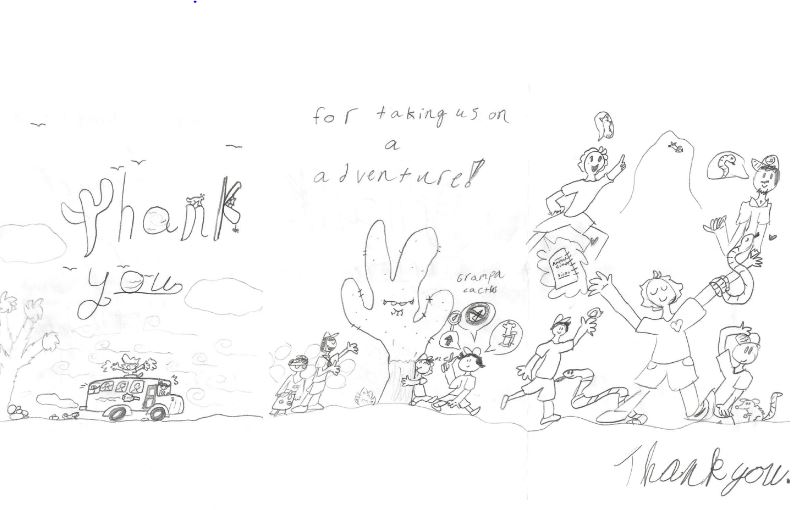
Our Pima Chapter Community Partner, the Cooper Center for Environmental Learning, hosted their annual Spring Critter Camp on March 11-12. The Cooper Center site is situated on 10 acres of pristine Sonoran desert land, 7 miles west of downtown Tucson. Julie Concannon, Jane Hunter, Jack Brooks, and Justine Hernandez from Cohort 8 and Summer Marshall from Cohort 6 volunteered and assisted with planned outdoor programs for the Sunrise Drive Elementary school student group. Fun and educational activities included mixing pallets of the desert, learning how to use binoculars, and how to identify tracks, skulls and scat. The students surely had an unforgettable outdoor nature experience. – Intro Deb Petrich, Cohort 1
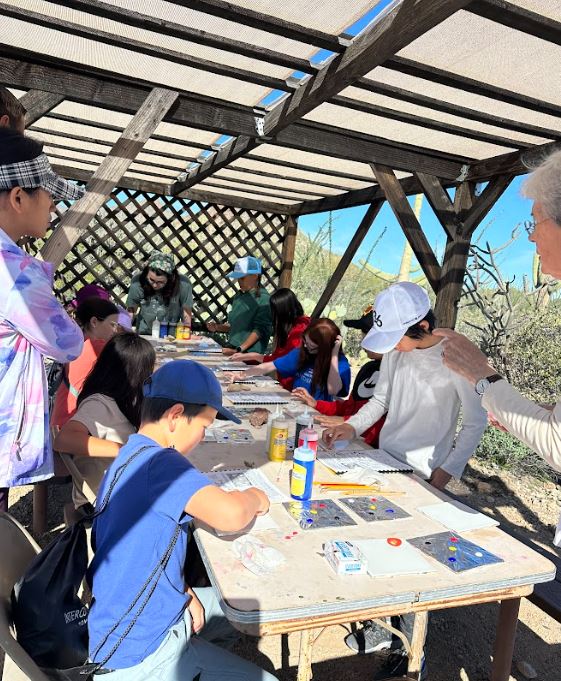
Volunteer Experience and Photos contributed by Julie Concannon, Cohort 8: Sunrise Drive Elementary School held Critter Camp at the Cooper Center on March 11-12. Justine, Jane, Jack, and Julie from the newly-minted Master Naturalist Cohort 8 showed up to help out. We completely enjoyed our time with the classes from Sunrise School. There were several classes at this camp. One of the classes was a Chinese Immersion Class. The kids were pretty surprised when I greeted them in Mandarin (Ni hao’). You never know what skill you are going to use from your Master Naturalist Bag. There were three stations for us to handle. Jack volunteered for Mixing Pallets of the Desert Class. I had never seen this activity before and went to observe them. The activity of mixing colors to achieve desert colors made my fingers itch to do art. Justine was selected to help with teaching children how to use binoculars-and bonus, she got to work with the researcher from Tucson Bobcats. Those children spent time looking for Bobcat kittens on the adjacent mountain next to Cooper Center. I ran the Skulls and Scat table. It is pretty amusing to watch the kid’s faces when they finally realize the scat is rubber and that they could touch it. I told my friends that “I was likely their only friend who had scat on their countertop.” They replied “certainly the only one that was proud of it.” Critter Camp was a really fun volunteer opportunity.

Charlotte Ackerman, Catalina Foothills STEM Integration Specialist, created a file of pictures from the field trip for our viewers and naturalists to enjoy. In addition, she scanned thank you notes from the students that referenced their activities and some that expressed the students’ enthusiasm for the day so well. Charlotte noted: ‘…they are all still talking about it! Thank you to all for the help.’ Thanks to Peggy Ollerhead, Cohort 3, for providing Charlotte’s comments, photos link and thank you notes.
Camp Cooper Thank You notes
Tucson Festival of Books March 9-10, 2024
Posted on April 3, 2024 by tania333c121431a94
The Pima County Master Naturalists (PCMN) have been watching folks take delight in a beautiful mesquite box full of scat for years. No matter where we are, people make a point of trying to figure out which animals call the places they are visiting in the Sonoran Desert home, based on what they leave behind. So when the opportunity to participate in the Tucson Festival of Books on March 9-10, with over 180 local and national exhibitors, we were thrilled!

Everyone who chats with the master naturalists at an event has a story to tell and it most always delights. They reveal the name of their favorite 4th grade teacher who introduced them to owl pellets, the ‘gift of scat’ the bobcats leave on their patios and the enchanting call of the coyotes they hear but never see. This year at Science City, a part of the Festival of Books, all of us who volunteered, had a story of our own to tell about how folks are charmed by our wild spaces! By partnering with Pima County Parks and Natural Resources, we were able to include track activities, including a kinetic sandbox with track molds, and a pocket-sized take-home field guide using stamps of the tracks of some of our most familiar desert critters.


We distributed over 400+ field guides in two days to both Tucson residents and out of town visitors. Every individual left with a better appreciation of who else shares our trails, arroyos and wild spaces and the newfound knowledge of how they might identify even those critters they will not see.
As a multi-day event, the Tucson Festival of Books required a team of volunteers. Many thanks to the following folks: Jenna Marvin C3 (who wasn’t able to attend in person, but folded over 500 field guides) and Melissa Mundt, C5 and Course Coordinator, who helped with logistics, copying and gathering materials. Saturday’s team of volunteers (captained by Peggy Ollerhead C3) included Andrea Hoerr C3, Chris Robie C6, Linda Dugan C5, Penny Miller C2, Linda Doughty C6, Dana Hook C6, and Jan Schwartz C4. Sunday’s crew was captained by Izetta Feeney C6 and included Sue Robertson C8, Rita Hartman C8, Francesca Ziemba C6, and Summer Marshall C6.


Post and Photos Peggy Ollerhead, Cohort 3; photo of F. Ziemba from Dana Hook ,Cohort 6
Wild at Heart: Burrowing Owls Thriving in Their New Home
Posted on March 31, 2024 by tania333c121431a94

Post and Photos by Jane Hunter, Cohort 8
Early each day in mid-March, Jean Boris, Arizona Master Naturalist, Pima County Chapter and volunteer coordinator, checks the schedule to see who will be feeding the owls that day. She also touches base with Greg Clark, Wild At Heart’s Burrowing Owl Habitat Coordinator, to discuss any issues or concerns that need to be addressed. She contemplates taking the day off, but instead straps on her boots, packs up her car and heads to the Martin Farm in Marana to check on the colony of burrowing owls that have been relocated to the farm. Like so many other dedicated volunteers, the owls, although primarily adults, are her “babies” and she is willing to do anything to keep them safe and healthy.
Burrowing owls are the only known species of owl to live and raise their young underground in burrows abandoned by squirrels, kangaroo rats, coyotes, foxes, skunks, and badgers. The new home for these owls that were displaced by development in the Phoenix area, is a field of 25 tents that were built by a large crew of volunteers, many of them AZ Master Naturalists, masterfully managed by Greg Clark who is eminently qualified to lead this complex and sometimes challenging project.Greg’s qualifications are too numerous to describe here, but you can learn more about Greg and the project at: Wild at Heart Burrowing Owl Relocation Project.
The support of Jean and nine other Pima Master Naturalists has been instrumental to the success of this project. Next year, when the invitation to support the project is posted, “run, don’t walk”, to sign up. It will be a tremendous experience that you will never forget.



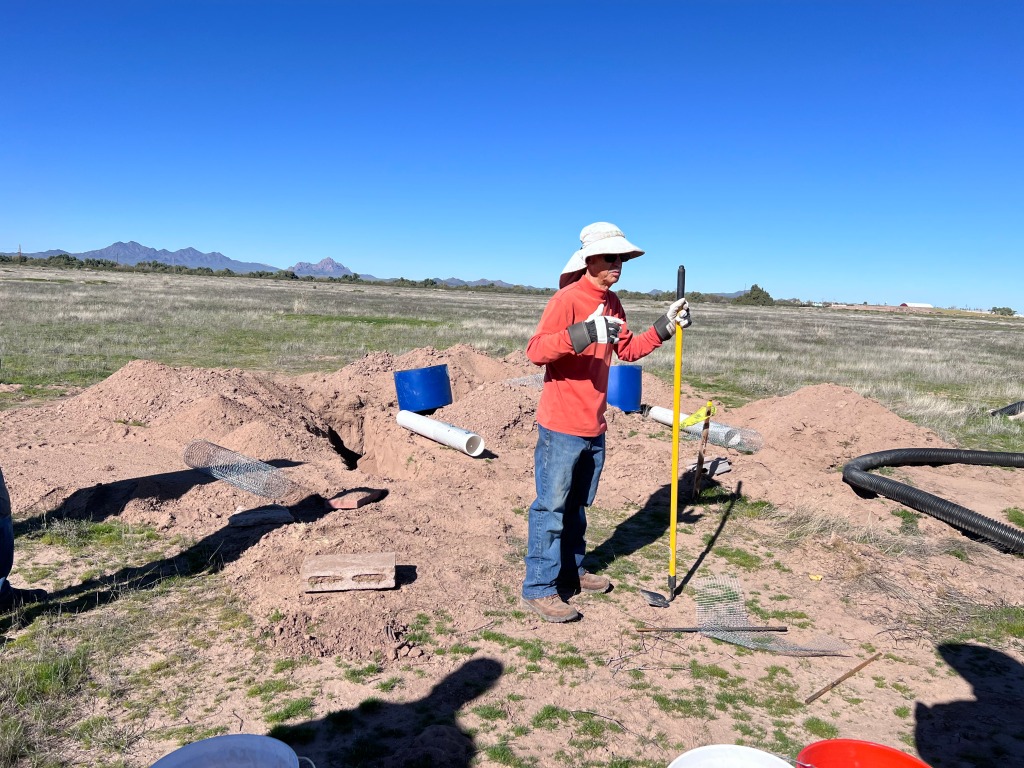
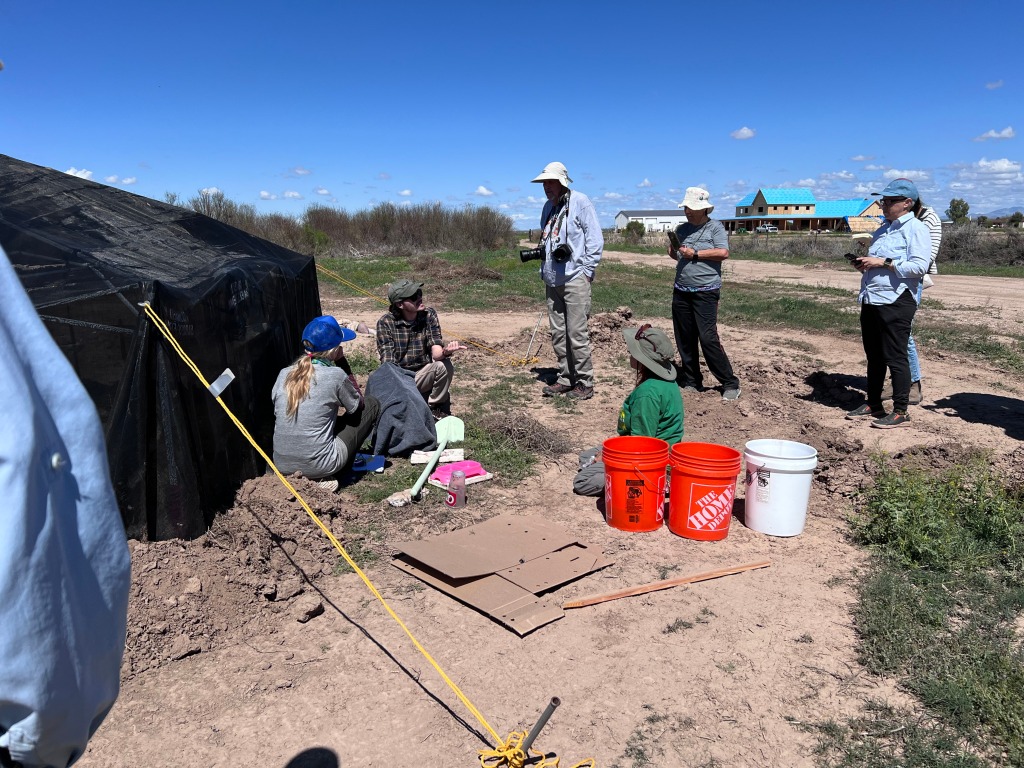

AZMN Association Annual Conference, January 27-28, 2024
Posted on March 30, 2024 by diamonddeb13
Contributions and Photos: Juanita Armstrong-Ullberg, Maricopa Parks Chapter Sponsor; Dana Hook, Pima Cohort 6; Deb Petrich, Pima Cohort 1

Post from Deb Petrich, Pima MN Chapter: This year the Central Highlands Chapter hosted our Arizona Master Naturalist Annual Conference up in beautiful Prescott, Arizona (the Pines), with well over 50 participants from all 4 Chapters: Borderlands, Central Highlands, Maricopa and Pima. This was a chance for our naturalists to meet new members, learn about the cultural and natural history of the Central Highlands region (session presented by Maria Icenogle, Education Director at the Highlands Center for Natural History and Chapter Advisor), then attend such diverse breakout sessions ranging from bats, to outdoor school habitats, to the history of the Yavapai people, to a character re-enactment from Prescott’s original mining settlement and more! On Sunday members could attend a morning session with Noel Fletcher, a Retired Wildlife Biologist, whose presentation discussing, comparing, and contrasting public land management agencies, policies, priorities and natural resource management in Arizona was very enlightening. Afterwards, naturalists were able to participate in several field trip options including an indoor tour at the Museum for Indigenous People or the Natural History Institute. Otherwise, naturalists headed outdoors to learn about the geology of the Granite Dells, explore the gardens and trails at the Highlands Center for Natural History, or learn about the important preservation work (and see murals!) on Granite Creek.
Post from Dana Hook, Pima MN Chapter: If you were unable to attend the AZMN conference in Prescott, you missed a wonderful, educational, friendly, and fun event with more than 50 environmental geeks from around the state. The conference was well organized, and I learned so much at the sessions. They brought in retired professionals from the National Parks, the Forest Service, and from Game and Fish. I really appreciated the leader from the Prescott Yavapai tribe that spoke to us about their history, culture, and vision for the future at their reservation and beyond.



The Sunday field trips ranged from a geology hike in the Granite Dells to museums. They were also led by professionals that helped us understand in more detail the history and prehistory of the Upper Highland region. The conference is held each year around the state, and in 2025 it will be help in the Maricopa Chapter region, January 23-25. Save those dates in your calendar and join your fellow naturalists there.
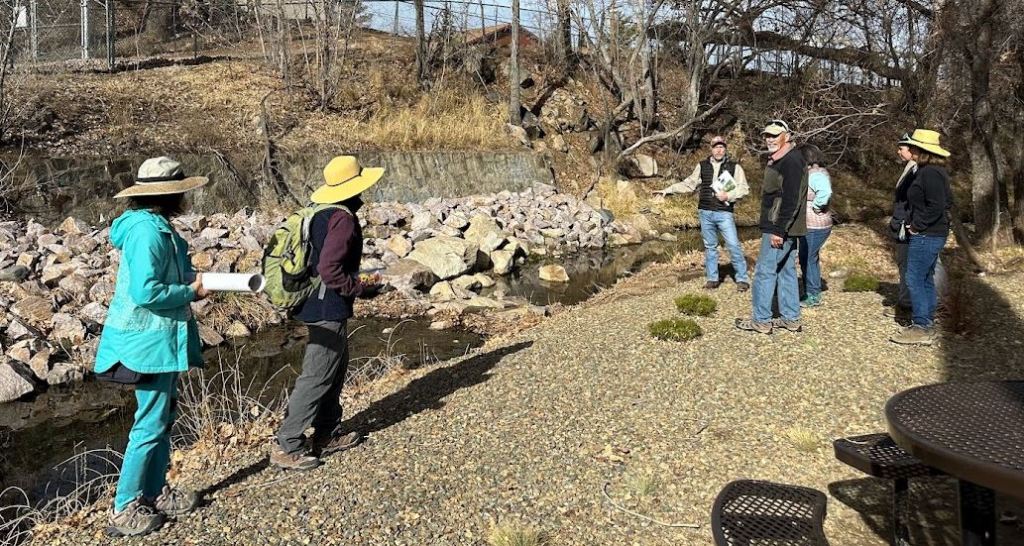
This was the 10th anniversary of the AZMN Association. Our Chapter will celebrate our 10th anniversary in 2026 and we will more than likely be hosting the state conference that year. We are the oldest chapter in the state, and we want to continue to grow and thrive. Through our eight years of existence, we have provided 41,000 hours of service to the environmental community. This year, I hope that together we can reach 50,000 hours of accumulated service. There are so many ways to volunteer as citizen scientists, environmental educators, and stewards of the environment. Let’s continue to get together, learn more, give more, and play more as a community of environmental geeks.

Post from Juanita: The Central Highlands Chapter put on an amazing conference. It was a great location and provided us with much time to spend learning all about Arizona’s natural history, biodiversity, and geology, but we also spent time getting better acquainted with one another and our fellow chapter members. You know what they say. “You can learn something new from everyone,” and this is so true. So to all of you who made it to the conference- It was wonderful to spend time with you; we had some great laughs and shared great ideas. I hope you learned much about our great state and its ecological communities, geology, natural history, and geology. I sure did. The keynote speaker had a fantastic presentation and was so knowledgeable about natural history and geology!


We also had a great fireside chat with many coyotes howling nearby.

I wanted to share with you all an amazing experience we shared together. Have you ever seen an Acorn woodpecker? We were excited to view this amazing bird; its chatter sounded like heckling ladies; they were on the conference grounds, and we got to see firsthand the acorn woodpecker stashing in action; it was really amazing to see how many acorns were stored in this one Ponderosa pine.
Post from Deb: In addition, the Association held a special raffle whereby each chapter contributed baskets, which included natural and cultural history items related to their area and Arizona. Winners included Dre Hoerr and Peggy Ollerhead from the Pima chapter and Karen Hajek and Darleen Sims from the Maricopa chapter.
Aqua Caliente Park Nature Walk
Posted on March 30, 2024 by diamonddeb13

‘I go to nature to be soothed and healed, and to have my senses put in order.’ — John Burroughs
On a beautiful, sunny, 80 degree day at the end of March, I decided to go for a little nature walk and do some nature photography around the ponds and grounds of Roy P. Drachman Aqua Caliente Park (ACP). If you haven’t been, what a local gem this park is, tucked into the Northeast corner of Tucson. ACP is a 101-acre park that was a former working ranch with an orchard, which offers large grass areas, picnic spots with grills and tables, paved walking paths, hiking trails, restrooms, drinking water and reservable spots. The Ranch House has wonderful historical exhibits and furnishings along with an attached gallery presenting various art exhibits throughout the year.

Moreover, what’s so unique about ACP is its perennial warm spring and many California Fan and Date palms that provide vital shelter for western yellow bats, great horned owls, raccoons and other wildlife.



With all of our rains the past few months, 5 ponds were observable with such wildlife as red-eared slider turtles, mallards, great egrets, neotropic cormorants, and ring-necked ducks. Phainopepla, crackles, vermillion flycatchers, Abert’s towhees along with various sparrows and finches were also visible.









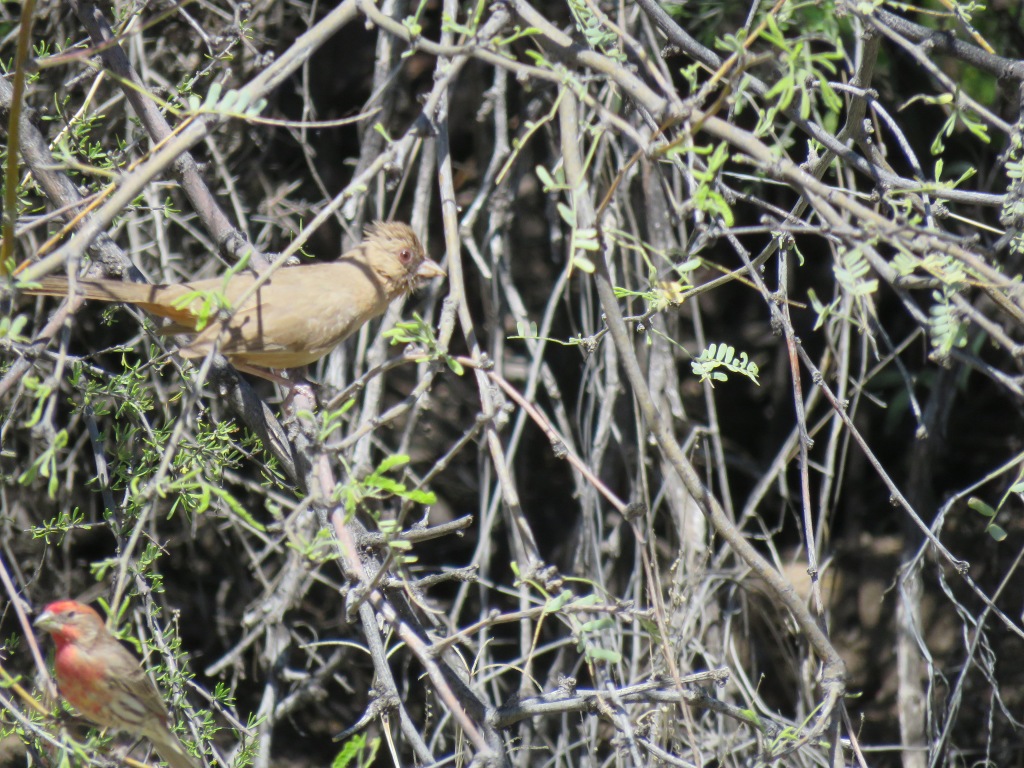



Abundant wildflowers really put on a display including desert chicory, globe mallow, pink fairy-duster, golden marguerite, parry’s beardtongue (penstemon), chuparosa, hairy-seed bahia, and bladderpod, to name a few.
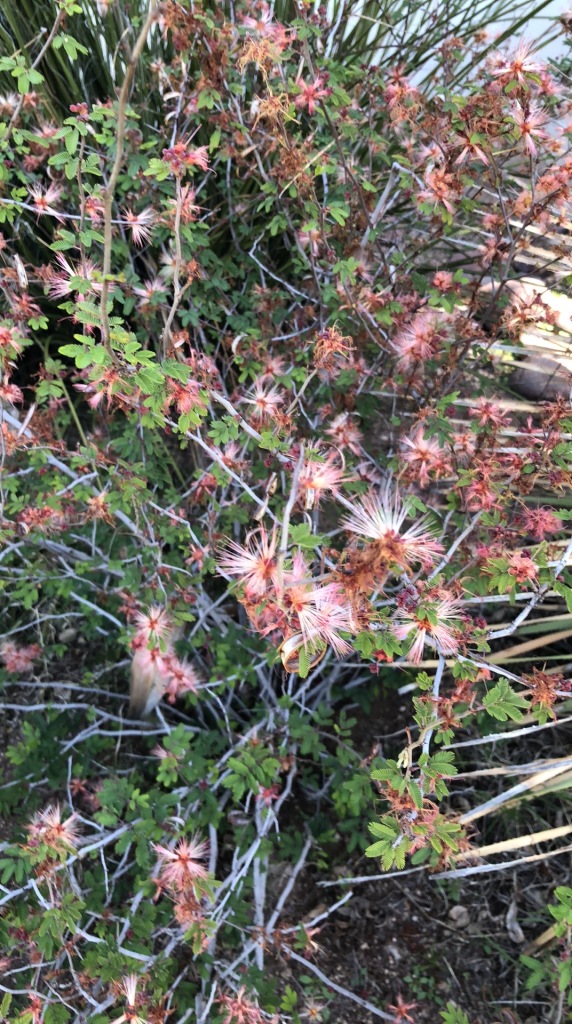


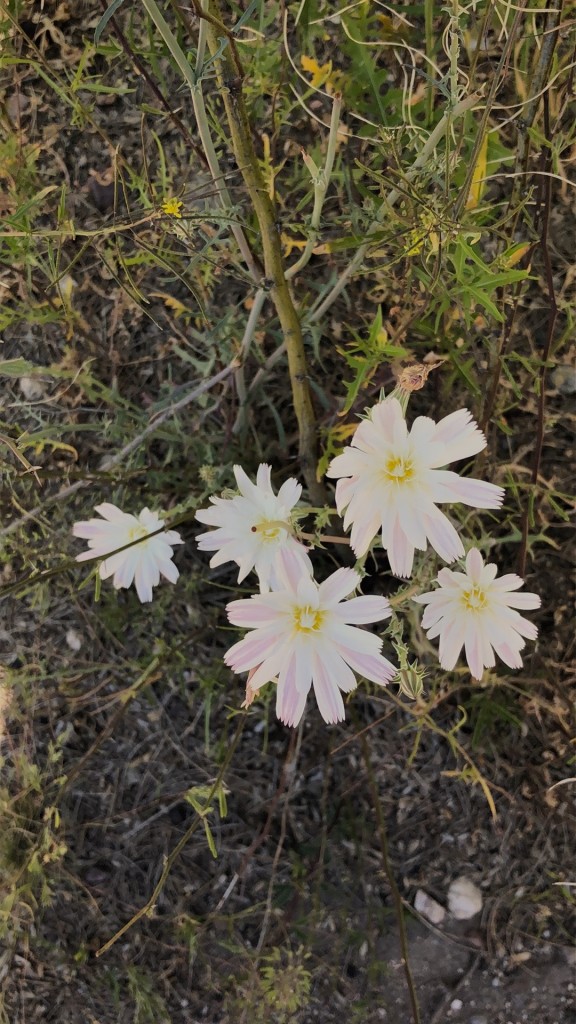



Post and Photos by Deb Petrich, Cohort 1
Naco Arizona
Posted on March 30, 2024 by tania333c121431a94
By Franklin Lane, Cohort 1
Just like there are two Nogales’ (ambos Nogales) there is also a Naco, Arizona (pop. ~800) and a Naco, Sonora (pop. ~20,000). Both Nacos are located about (30) miles east of Sierra Vista and maybe (12) miles south of Bisbee, Arizona. There are a couple cool reasons to make this easy day trip from Tucson. The first is to visit the re-habilitation site of Camp Naco and the second to experience the mammoth kill site just northwest of town.
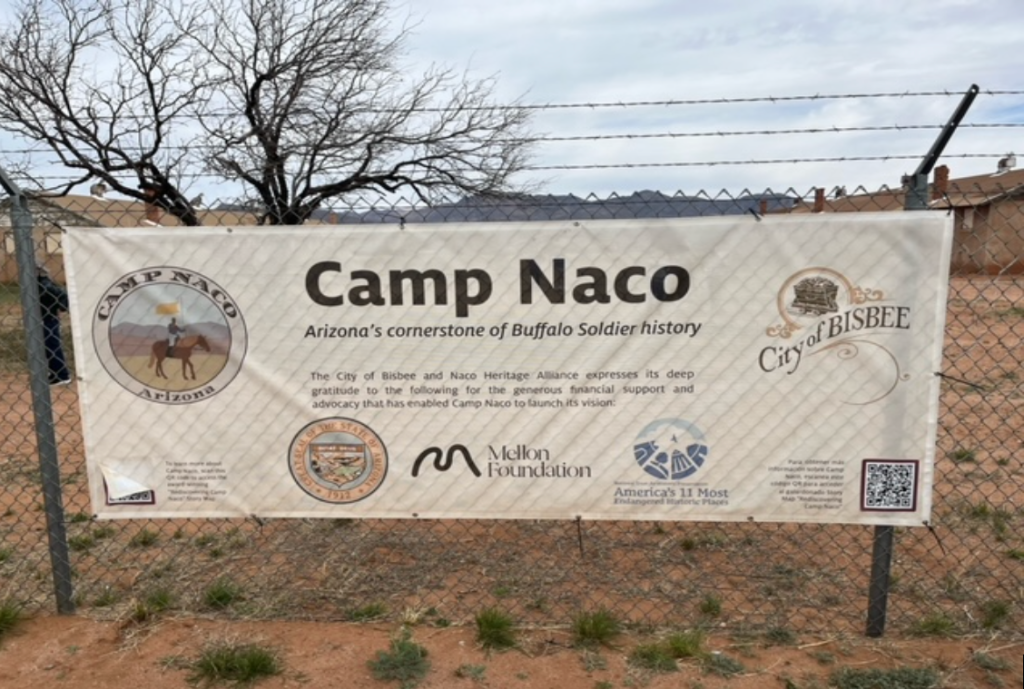
In the words of the Naco Heritage Alliance:
“Camp Naco was established in 1911 in Naco, Arizona as a tent camp manned by the Ninth and Tenth Cavalry of Buffalo Soldiers from Fort Huachuca to keep hostilities from the Mexican Revolution from spilling across the border. In 1919 the US War Department made it a permanent installation. Part of a 1,200-mile chain of military camps along the border from Texas to Arizona. Camp Naco was one of only two constructed of adobe and the only one still standing. The camp was decommissioned in 1923 & repurposed for a Civilian Conservation Corps Camp in the 1930’s. It passed into private ownership in 1960 and is now owned by the City of Bisbee.”
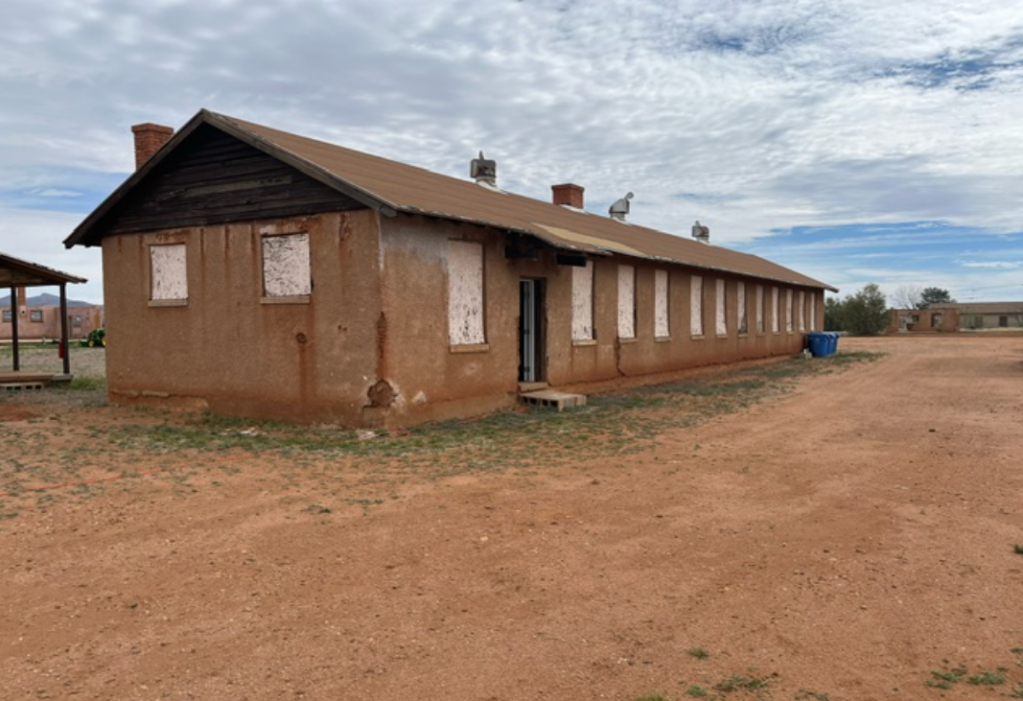
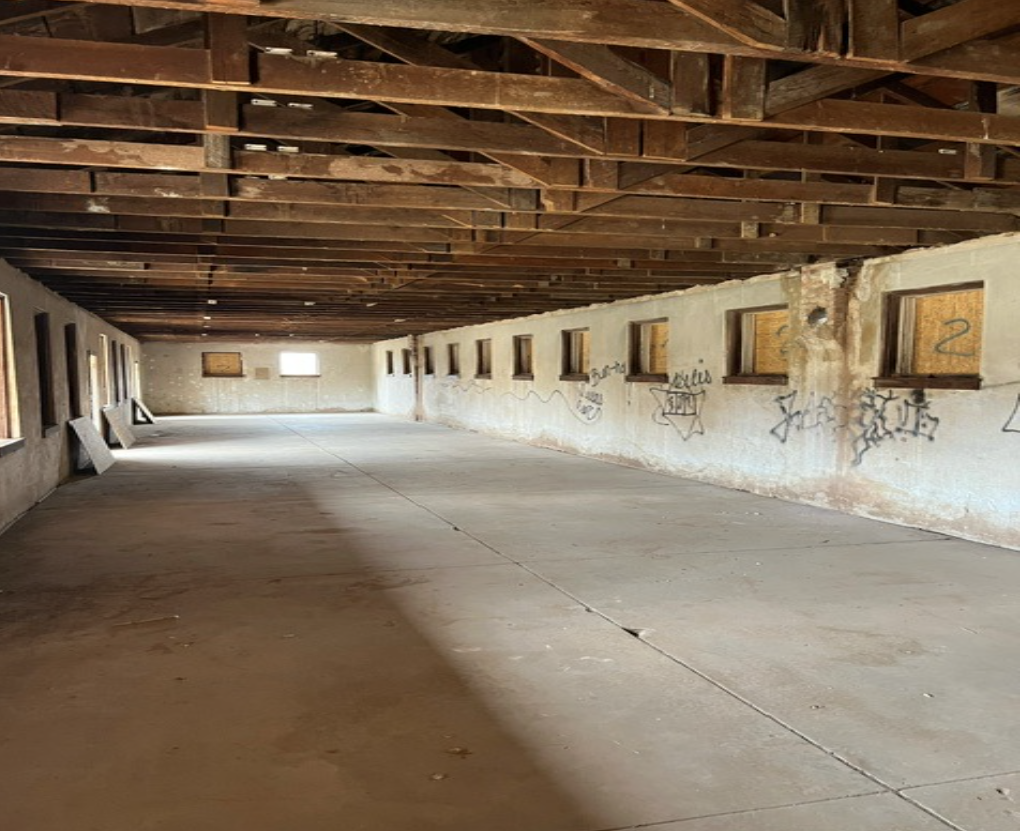
The Naco Heritage Foundation has received several State and Federal grants to rehabilitate the facility into a community center, historical destination and museum. Currently, it is only open to the public during occasional programed events. These events often include participation by the Fort Huachuca Chapter of the Southwest Association of Buffalo Soldiers. Details can be found at: CampNacoAz.org.
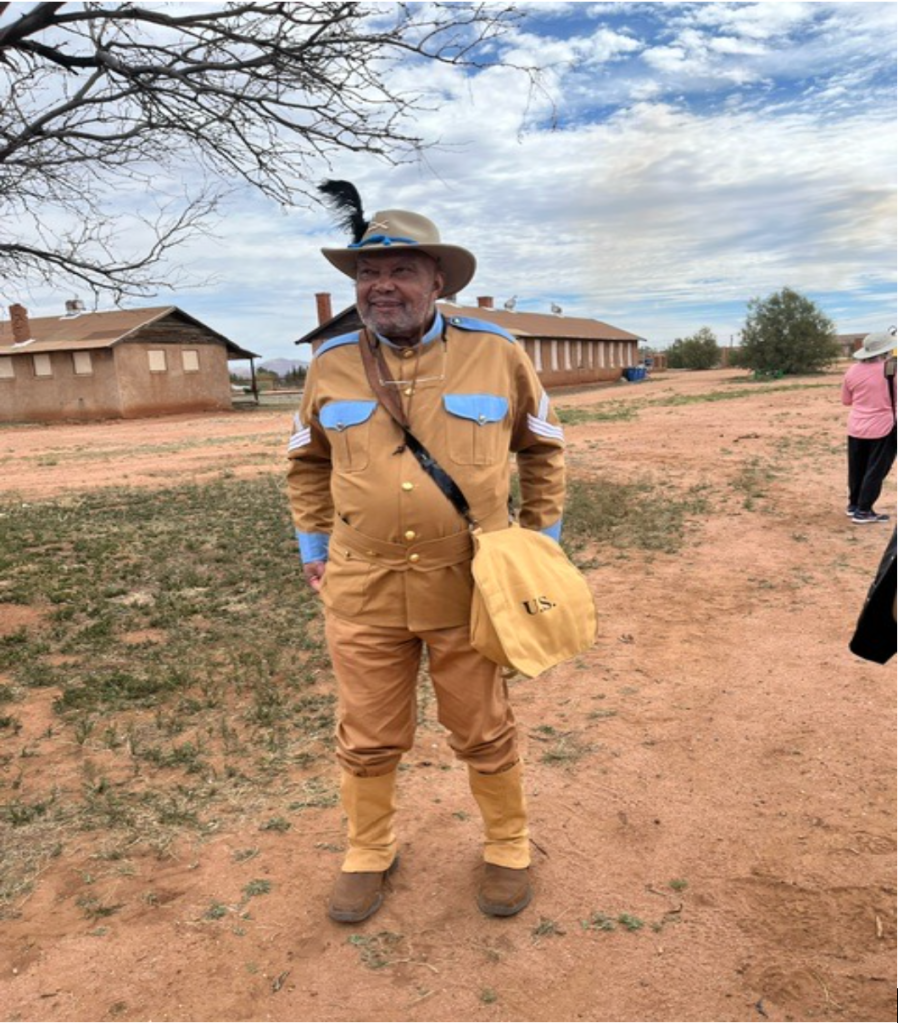
About a mile north of Camp Naco where Greenbush Draw crosses S. Willson Rd. is the Mammoth Kill site first discovered by a local rancher in 1951. The rancher, Marc Navarrete, turned two clovis points over to the University of Arizona. Emil Haury excavated the site in 1952 and uncovered the Colombian Mammoth remains and (6) additional clovis points. The site has been completely scrubbed so casual access is only discouraged by a couple strands of BLM wire. It is a somewhat chilling experience to stand in the site and reflect on the action that occurred ten to twelve thousand years ago.
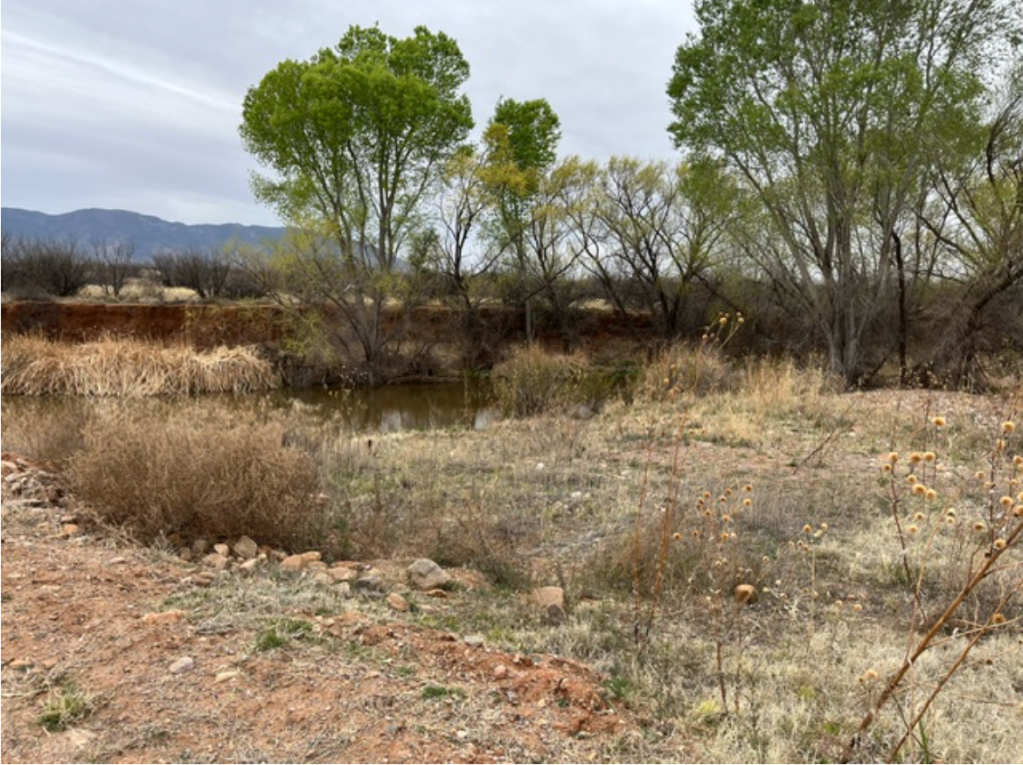
A final interesting stop in Naco is the Gay 90’s Bar. My extensive research has determined that this maybe the closest saloon to the US-Mexico line (maybe 100 feet) of anywhere along the Arizona border. It also serves as a defacto historical museum until Camp Naco is completed. Ask the bartender about Naco’s true claim to fame, as being the only Continental United States city ever bombed by a foreign power. During the Escobar rebellion in 1929 rebel forces hired an Irish-American pilot/mercenary (Patrick Murphy) to bomb Mexican Federal forces in Naco Sonora. Several errant bombs fell on the US side. Aerial bombing was far from an exact science in 1929!
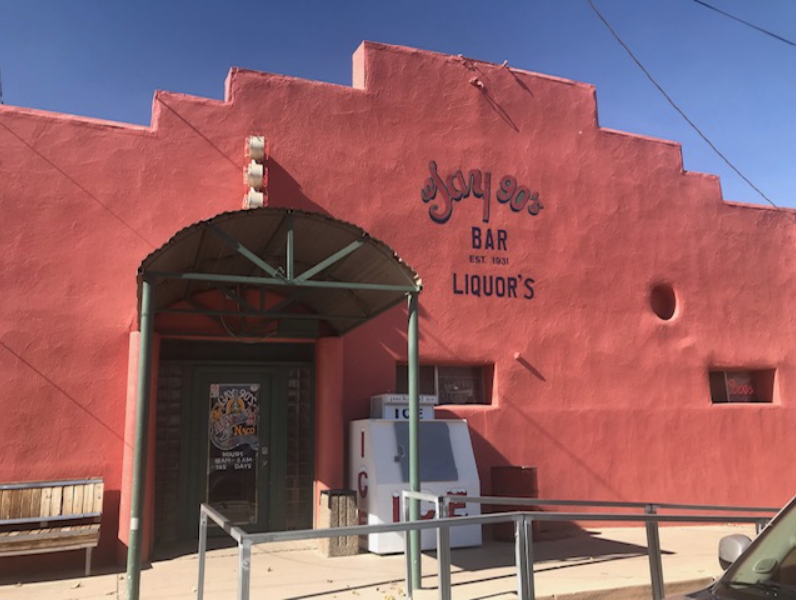
Pima Master Naturalist Presents at Tucson Festival
Posted on March 30, 2024 by tania333c121431a94

Dan Collins 
Known as “The Tree of Wonders”, the agave has been celebrated in native cultures for centuries throughout the American Southwest and Mexico. That tradition continues today in Tucson’s Agave Heritage Festival, April 17th – 21st, 2024. Established in 2008 as a Cinco de Mayo celebration, the Festival has expanded to include educational seminars, horticultural tours, archaeological excursions, art expositions, music festivals, cultural ceremonies, culinary events, and of course, mezcal and tequila tastings. (festival)
A new program in this year’s festival is produced and narrated by Arizona Master Naturalist Dan Collins; The Amazing Agave presentation is an intriguing overview of “all things agave”. In this enlightening program, we learn how the agave has been utilized by both indigenous and modern peoples to make over 40 products – from textiles to tequila. We also explore today’s commercial enterprises and cultural influences of the agave, uncover the adaptations that enable this native succulent to thrive in the hot and harsh Sonoran Desert, and discover how a prized ornamental holds the promise of a sustainable crop.
Presentations of The Amazing Agave are on Wednesday, April 17th at 10:15 AM and again on Saturday, April 20th at 1:15 PM at Saguaro National Park-West in the Red Hills Visitor Center theater, located at 2700 N. Kinney Road, Tucson, AZ 85743. (map)
Pima MN 2023 Annual Meeting
Posted on December 20, 2023 by diamonddeb13

Franklin Lane presenting the Train Mural by Joe Pagac during his Barrio Viejo Walking Tour
On a beautiful, sunny Sunday on December 10th, the Pima Chapter held their annual meeting, graciously hosted by Penny Miller (C2), at her home in the Tucson Mountains. Scrumptious food, good friends and a good time was had by all! Attendance was at an all-time high for the chapter with 46 people including members, new recruits (C8) and family members. Twelve (12) MNs participated in pre-meeting activities which included a Barrio Viejo Walking Tour guided by Franklin Lane (C1), a Nature Hike with a Geology Twist at Sweetwater Preserve conducted by Jenna Marvin (C3) and a Sweetwater Wetlands Birdwalk lead by Christina Klock (C7).
Pima County Natural Resources and Parks & Recreation, Environmental Education (EE), took over as the Chapter’s Sponsor in 2023. Chapter Advisor, Melissa Mundt (C5), gave a brief presentation on EE’s role as our Chapter Sponsor. A BIG thank you was given to all members for their continued volunteer service to our community and associate partners and to the chapter. In addition, 5 year certification awards were presented to 19 Pima Chapter members who have recertified for 5 or more years thanking them.
Post by Deb Petrich C1; Photos courtesy of Kathy McLin C3, Linda Doughty C6, Tania Morris C6, Dana Hook C6, Franklin Lane C1




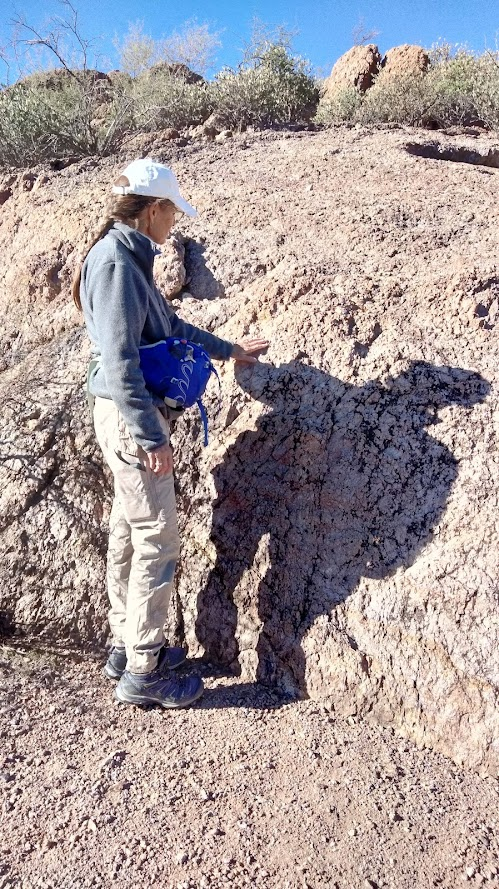

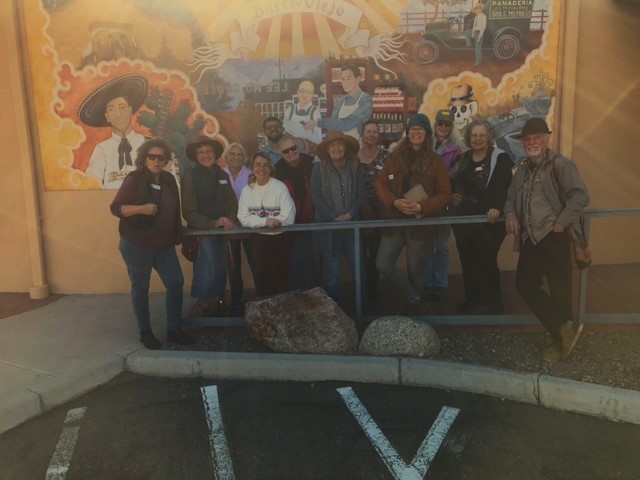





Search
Recent Posts
Archives
- April 2024
- March 2024
- December 2023
- August 2023
- May 2023
- April 2023
- March 2023
- February 2023
- January 2023
- October 2022
- September 2022
- August 2022
- July 2022
- June 2022
- May 2022
- April 2022
- March 2022
- February 2022
- January 2022
- December 2021
- October 2021
- July 2021
- June 2021
- May 2021
- April 2021
- February 2021
- December 2020
- November 2020
- October 2020
- September 2020
- July 2020
- June 2020
- May 2020
- April 2020
- February 2020
- January 2020
- October 2019
- September 2019
- June 2019
- March 2019
- January 2019
- September 2018
- August 2018
- May 2018




You must be logged in to post a comment.